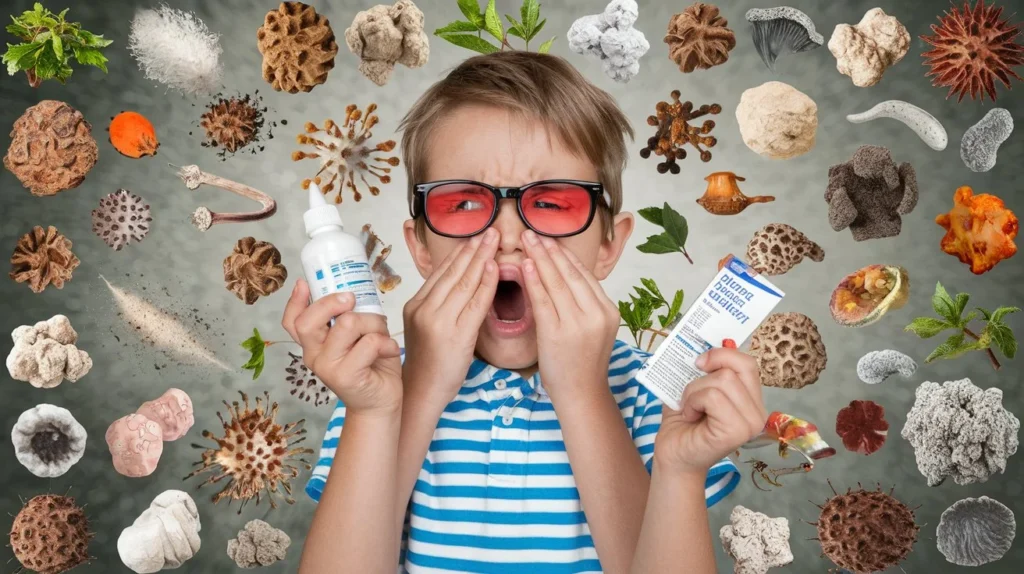Navigating Seasonal Allergies in Children
Seasonal allergies in children can feel overwhelming, especially when symptoms become a regular part of your family’s life during certain times of the year. This guide aims to provide a clear understanding of these allergies, their causes, symptoms, and management tips, all based on cognitive research. By understanding how allergies impact children differently, you can be better equipped to support your child’s health.
Table of Contents
What Are Seasonal Allergies?
Seasonal allergies, also known as hay fever, are allergic reactions to environmental elements like pollen, mold spores, or grass that vary by season. Children often experience allergy symptoms during spring, summer, and fall, as plants release pollen into the air. These particles can trigger reactions in those sensitive to allergens.
Common Symptoms and How to Recognize Them
The symptoms of allergies in children can range from mild to severe, often mimicking a cold. Recognizing the difference between a regular cold and allergy-related symptoms is crucial for timely intervention.
| Symptom | Common Duration with Allergies |
|---|---|
| Runny or stuffy nose | Several weeks, often persistent |
| Sneezing | Frequent, especially outdoors |
| Itchy, watery eyes | Common with outdoor exposure |
| Coughing or throat irritation | Persistent during allergy season |
| Fatigue | Especially after being outdoors |
Source: American College of Allergy, Asthma, and Immunology, 2023
When Are Seasonal Allergies Most Prevalent?
Children are most likely to experience allergy symptoms during certain times of the year when specific plants and trees release pollen. Understanding the typical allergy seasons can help you prepare and minimize exposure.
| Season | Common Triggers |
|---|---|
| Spring | Tree pollen (oak, maple, cedar) |
| Summer | Grass pollen |
| Fall | Weed pollen (ragweed is most common) |
Cognitive Development and Allergy Perception in Children
Cognitive research reveals that children under six often struggle to communicate specific symptoms, leading to delayed treatment. Many younger children may not recognize the source of their discomfort, simply feeling “tired” or “itchy.” As children age and develop communication skills, they become more aware of their symptoms and can better articulate them, making it easier for you to understand their needs.
How Are Allergies Diagnosed?
Diagnosing allergies in children often involves a mix of symptom analysis and testing, especially if they’re experiencing frequent or severe symptoms. Pediatricians may suggest various tests to pinpoint specific triggers:
| Diagnostic Test | Purpose |
|---|---|
| Skin prick test | Identifies reactions to common allergens |
| Blood test | Measures antibodies that react to allergens |
| Allergy challenge test | Exposes children to potential triggers under care |
Source: National Institutes of Health, 2023
Treatment Options for Seasonal Allergies in Children
Once allergies are diagnosed, treatment options can be customized based on your child’s symptoms, age, and specific triggers. Here are some common methods:

- Antihistamines: These medications reduce symptoms by blocking histamine, which the body produces in response to allergens.
- Nasal corticosteroids: Often used to reduce inflammation and relieve nasal symptoms.
- Eye drops: Helpful if your child’s symptoms primarily affect the eyes.
Some treatments, like nasal corticosteroids, may take several days to show results. It’s essential to talk to a healthcare provider about potential side effects, such as drowsiness or dry mouth.
Cognitive Tips for Helping Your Child Understand Allergies
Educating children about allergies and empowering them with knowledge can make it easier for them to manage their condition. Children aged six and above may benefit from learning the following:
- Recognizing Triggers: Teach your child to identify and avoid outdoor environments that can trigger symptoms, especially during peak seasons.
- Self-Care Habits: Encourage regular hand-washing, changing clothes after outdoor play, and using protective sunglasses to reduce exposure to allergens.
- Effective Communication: Remind them to speak up when they start feeling symptoms, so you can take quick action.
FAQ on Seasonal Allergies in Children
1. How can I differentiate allergies from a cold in my child?
Allergies generally last longer than colds and don’t cause fever. If symptoms persist without improvement over several weeks, it’s likely allergies.
2. Can children outgrow seasonal allergies?
Yes, some children may outgrow them, while others may experience symptoms into adulthood. Regular monitoring and support can help minimize long-term impact.
3. What is the best way to prevent allergy symptoms?
Minimizing outdoor exposure during peak pollen times, using air filters indoors, and regularly cleaning can all help reduce exposure to allergens.
Conclusion
Seasonal allergies in children are manageable with the right tools, knowledge, and proactive care. Understanding how cognitive development affects their perception and reaction to allergies enables you to offer better support, so they can enjoy a comfortable life through all seasons.
References
- American College of Allergy, Asthma, and Immunology. (2023). “Guidelines on Allergy Diagnosis and Management for Children.”
- National Institutes of Health. (2023). “Childhood Seasonal Allergies: Causes, Symptoms, and Treatments.”
- Pediatric Cognitive Research Journal. (2023). “Understanding Symptom Perception and Communication in Young Children with Allergies.”







